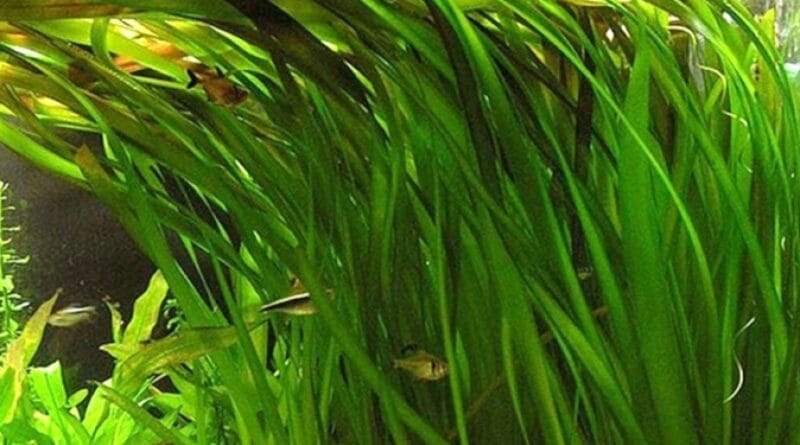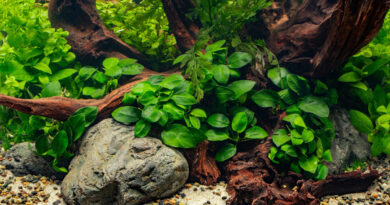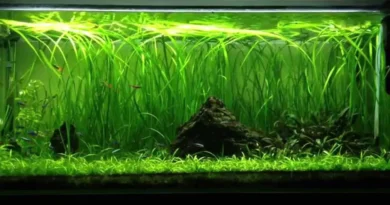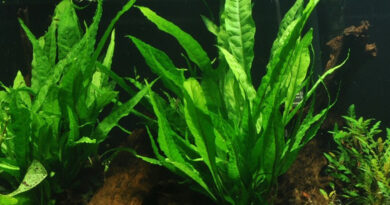Vallisneria: The Ultimate Care Guide for Beginners and Experts
| Quick Info | |
|---|---|
Difficulty Level | Easy |
| Distribution | Tropical and subtropical regions of Asia, Africa, Australia, Europe, and North America |
| Family | Hydrocharitaceae |
| Genus | Vallisneria |
| Growth | 20-40 cm or more/ 8-16 inches or more |
| Growth Rate | Moderate to Fast |
| pH | 6.5 to 8 |
| Temperature | 20°C to 28°C / 68°F to 82°F |
General Hardness(GH) | Soft to hard / 4 to 18 dGH |
| Aquarium Placement | Background |
| Lighting | Low to Medium |
| Propagation | By runners |
Facts and Overview
Vallisneria, commonly known as eelgrass or tape grass, is a hardy and fast-growing aquatic plant belonging to the Hydrocharitaceae family. Native to regions like North and South America, Africa, and Asia, it thrives in both freshwater and brackish environments, making it a perfect addition to aquariums worldwide. This plant is well-known for its ability to adapt to a variety of water conditions and its distinct appearance with long, ribbon-like leaves.
These species are frequently used to create lush, vibrant underwater landscapes. They are particularly appreciated for their natural ability to oxygenate the water and provide hiding spots for fish and other aquatic creatures. Its versatility and ease of care make it a popular choice for both beginner and expert aquarium enthusiasts.
Appearance and Size
Vallisneria plants have long, narrow leaves that often resemble ribbons or grass. The leaves can range from bright green to darker hues, with some species even developing reddish tones under specific lighting conditions. The plant can grow to impressive lengths, with some varieties reaching up to 3-4 feet (90-120 cm) in height, though many aquarium species are cultivated to stay more compact. Vallisneria’s dense, vertical growth habit gives aquariums a natural, jungle-like feel.
There are several varieties, each with its own size and shape of leaves. For instance, the variety Torta features twisting, coiled leaves, while Vallisneria americana has broad, elongated leaves. In a well-maintained tank, it can form thick, flowing fields of greenery, contributing to a stunning aquascape.
Benefits in Aquarium
Vallisneria provides numerous benefits to aquarium ecosystems. As a natural oxygenator, it helps maintain water quality by absorbing excess nutrients and releasing oxygen. Its dense growth also aids in preventing algae bloom by competing for light and nutrients. Vallisneria can improve water clarity and support the overall health of the aquarium’s ecosystem.
Additionally, it provides excellent cover for shy or smaller fish, offering them a secure environment in which to hide or forage. Its long leaves also serve as a spawning substrate for certain fish species. The plant’s ability to tolerate a range of water conditions makes it an ideal plant for a wide variety of tank setups, from low-tech to high-tech aquariums.
Compatible Tank Mates
Vallisneria is compatible with a wide range of aquarium tank mates, thanks to its adaptability and non-toxic nature. Fish such as bettas, tetras, danios, and guppies are excellent companions for Vallisneria, as they appreciate the plant’s shelter and contribute to the overall biodiversity of the tank. Shrimp, snails, and certain species of catfish also thrive in tanks with Vallisneria, as they can feed on detritus and algae that grow on the plant’s surface.
However, there are a few tank mates to be cautious about. Large fish or species that are known to dig or uproot plants, such as cichlids, may damage Vallisneria. Additionally, herbivorous fish, such as some types of plecos and tangs, may graze on the leaves, slowing their growth.
If you’re still deciding which fish are right for your aquarium, check out our beginner-friendly guide to choosing freshwater fish based on tank size, temperament, and compatibility.
Tank Conditions and Requirements
Vallisneria is a robust plant that can adapt to a wide range of water conditions, but for optimal growth, it prefers the following:
- Water Temperature: 65-85°F (18-29°C), with a stable temperature range being key.
- Water pH: A slightly acidic to neutral pH (6.5-7.5) is ideal, though Vallisneria can tolerate a broader range.
- Water Hardness: Soft to moderately hard water is best, with GH levels ranging from 4-8 dGH.
- Lighting: Moderate to bright lighting is beneficial for promoting healthy growth, although Vallisneria can tolerate lower lighting levels. Stronger light can bring out the reddish hues in some species.
- Substrate: Vallisneria prefers a nutrient-rich substrate, but it can grow well in both gravel and fine sand. The plant’s roots do well in soft substrates where they can spread and take hold.
Regular water changes (about 25% every 1-2 weeks) and good filtration are essential for maintaining the water quality required by Vallisneria.
Tank Placement and Aquascaping
Vallisneria is often used in aquascaping to create a sense of depth or a natural background in the aquarium. Its tall, flowing leaves make it a perfect candidate for background or midground placement. In large aquariums, Vallisneria can be planted in clusters along the back or sides of the tank to create a dense, green backdrop.
For smaller tanks, planting Vallisneria in the midground can still provide a similar visual effect without overcrowding the space. As it grows, it will naturally spread via runners, making it a great plant for creating a lush carpet or for filling in empty spaces.
When planning aquascaping with Vallisneria, ensure that its growth won’t block other plants from receiving sufficient light. Additionally, consider the plant’s height when selecting tank mates to avoid crowding other species.
How to Plant in the Aquarium
Planting Vallisneria is simple and rewarding. Here’s how to plant the main plant and any young shoots:
- Prepare the Substrate: Ensure the tank substrate is loose enough to allow the plant’s roots to spread. A nutrient-rich soil or plant-specific substrate is ideal, but gravel or sand can also work well.
- Planting the Main Plant: Gently place the base of the Vallisneria plant into the substrate, ensuring the roots are buried and the leaves are left above the substrate. The leaves should remain visible and unfurled above the waterline.
- Planting Young Plants: When you have young Vallisneria plants (often produced through runners or from separated offshoots), plant them in the same way. Ensure they are spaced out enough to allow them to grow and spread without competing for light and nutrients.
- Spacing: For a more natural look and better growth, plant each Vallisneria about 3-6 inches apart, depending on the size of the plant.
- Maintenance: As Vallisneria grows, trim back any overly tall or crowded sections to maintain a clean and healthy tank.
Care and Growing Guide
Caring for Vallisneria is relatively straightforward, but to ensure it thrives, here are some key tips:
- Water Changes: Regular water changes (around 25% every 1-2 weeks) help maintain optimal water quality and prevent nutrient imbalances.
- Nutrient Supply: While Vallisneria isn’t particularly demanding in terms of nutrients, supplementing with liquid fertilizers or root tabs can help it grow more vigorously, especially in low-nutrient substrates.
- Lighting: Vallisneria thrives in moderate to bright lighting. If the leaves turn yellow or brown, it might indicate insufficient light or nutrient deficiency.
- Pruning: Vallisneria grows quickly, so trimming it regularly helps maintain its shape and prevent it from overgrowing other plants. Remove any dead or yellowing leaves to keep the plant looking fresh.
- Propagation: Vallisneria naturally propagates by sending out runners, which produce baby plants. You can cut the runners to separate the new plants, then replant them into the substrate. Alternatively, you can allow the new plants to grow where they are, but trimming and replanting helps prevent overcrowding.
With proper care, it will thrive and provide both aesthetic beauty and practical benefits in your aquarium.
Vallisneria is a versatile and easy-to-care-for plant that offers numerous benefits for both aquascaping and aquarium health. Its adaptability, oxygenating qualities, and aesthetic appeal make it an excellent choice for aquariums of all sizes and experience levels. By following the simple care guidelines and ensuring the right tank conditions, you can enjoy its beauty in your underwater landscape for years to come.
For more detailed information on the different types, including their specific care requirements, check out our dedicated article on Vallisneria Types!





Comments are closed.